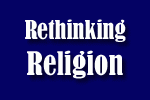I understand psychologists are studying languages to understand how the languages we speak shape our perception of reality. This Psychology Today article provides a basic if probably superficial explanation.

Available at Amazon!
Having spent the past several years soaking my head in ancient Asian religion, this hypothesis about language makes perfect sense to me. Languages, I realize, are built on culturally based assumptions about how the phenomena of the world are to be classified and thereby understood. Understanding what an ancient text is saying requires having some appreciation of the cultural assumptions of the author. Otherwise, you can miss the point being made by several thousand miles.
The Sanskrit word nirvana is an example of this. Very literally, it means “to extinguish,” in the way one extinguishes a flame. No end of westerners reading that have said, ah HA! Those crazy Buddhists are trying to obliterate themselves!
But, according to Buddhist scholars, the ancient people of the Buddha’s time assumed that the elements — air, fire, water, earth — were present everywhere and only manifested in recognizable form under certain conditions. Fire manifests as flame, they thought, when it is trapped by fuel and becomes hot and agitated. When it is released from fuel it changes into a cool, subtle, and usually undetectable state. Understanding that’s how the people of the Buddha’s time understood things changes the metaphorical meaning of nirvana considerably.
The way we experience the world is based partly on our physiology, especially our senses, and partly on how we interpret and conceptualize things. And that last part is something culture trains us to do. I use the phrase conceptual box quite a bit. It’s possible I coined it; I’m not sure. It refers to how the way we conceptualize things can limit our understanding. If we have a rigidly fixed idea of what a certain thing is — whether, say, religion, music, or chili — and we run into an example of that thing that doesn’t fit our assumptions, most people react in one of two ways. They either deny the new thing really is what it says it is, or else they distort the thing to make it fit into the conceptual box.
There is an obvious third option, of course, which is to change the shape of the box, but few people think to do that.
For example, how many of you are familiar with Cincinnati chili? It’s great stuff; many years ago I lived in Cincinnati and was addicted to it. The basic dish is a plate of spaghetti with a kind of thin sauce that’s closer to Mexican mole sauce than standard chili sauce, topped with shredded cheddar-ish cheese. That’s the three-way. As I remember it (it’s been a few years) if you order a four-way you get chopped raw onions with the cheese, and if you order a five-way you get the onions plus beans. If you want the beans but not the onions, order a “three-way beans.”
So for a while when living in Cincinnati I had a co-worker from somewhere else who could not deal with the chili. It literally messed with her head. If we went out for lunch to a chili parlor she was not only indignant over the assault on her linguistic sensibilities (“this is not chili!“), she would demand the sauce with beans — but none of the rest of it — be served to her in a bowl, because that’s what chili was supposed to be. And she would eat this with a puckered frown and wrinkled nose while the rest of us enjoyed our five-ways and hoped the eventual heartburn wouldn’t be too terrible. This is one kind of conceptual box.
Another example, which I discuss in Rethinking Religion, is that in the west we’ve developed fixed conceptual boxes that define religion and philosophy, and these work perfectly well for Christianity and the other monotheisms and for western philosophy. But many Asian religious/philosophical traditions don’t fit into either box. No gods or god worship? It must be a philosophy. Oh, but it’s mystical? Then it’s a religion. But it can’t be a religion, because there are no gods or god worship. Hmmm.
The standard strategy for dealing with Buddhism is to declare it’s a philosophy, not a religion, while slicing off the mystical and religion-y parts so that it fits into the philosophy box. Westerners rationalize this by declaring the religion-y stuff is somehow not original Buddhism, but something added later. Historical evidence doesn’t entirely support that theory, sorry. Certainly Buddhist practices have changed over the years, but it seems there were always religion-y parts to it.
The point is, though, that you can find long and passionate arguments about whether Buddhism is or is not a religion, and the parameters of the arguments are fixed by 21st century western concepts that don’t apply to Buddhism. And most of the time, no matter how patiently one tries to explain this, the arguers cannot see the problem. They’ve been conditioned to interpret and classify reality in a way that conforms to modern English, and that conditioning determines the limits of what they can understand. They literally cannot think “outside the box.”
Language, then, is a reflection of how the people who speak it conceptualize their world, and in turn conceptualization is shaped by language. It’s kind of a self-reinforcing system that’s very hard to break out of.
Buddhism is a process of experiencing and realizing without resorting to concepts. This is an even bigger challenge than breaking out of the linguistic box, and it takes most people years of mental cultivation to “accomplish” this. Note that the word accomplish isn’t exactly right, but it’s as close as I can get. And this highlights the problem of explaining dharma at all — the words don’t fit, because the concepts don’t apply.
So how do you explain it? Most of the time, you can’t. You can take people only up to a point, but they’ve got to go the rest of the way by themselves. You can give people definitions, metaphors, analogies, and hope that some of it strikes a chord, somewhere. But that which is realized through the mental cultivation is genuinely ineffable, because it’s something outside all of our conceptual boxes, and language simply can’t reach it.
This is something the Buddha himself realized. It’s said that after his enlightenment he debated with himself whether to teach at all, because he knew there was no way to explain what he had come to realize. Instead, he devised a means for people to realize it for themselves. That was the best he could do.
And even today, in the Zen tradition (and probably others) , people are warned not to go about blabbing about a kensho or opening experience to the general public. This is for several reasons, but a big reason is that as soon as your words hit their ears they’ll shove everything you say into their standard conceptual boxes, and it will all be misunderstood. And this has nothing to do with general intelligence. Sometimes very bright people get very huffy when they express some concept about dharma that’s way off the mark, and you say no, that’s not it, and then they feel insulted and demand that you explain it.
But, sometimes, it can’t be explained. As soon as you try to render it into language it gets sorted into subjects and objects and verbs that connote things that have nothing to do with what you’d like to say, but it’s as close as language gets.
So a lot of the process is training the mind to stop clinging to concepts. This is done in various ways. The infamous koans of Rinzai Zen, for example, are intended to break the habit of conceptualization by frustrating our standard linear, logical thought patterns. Students present their understanding of the koan to the teacher in a formal interview that ends as soon as the teacher rings a bell. I’ve been told that if a student ever began a presentation with “I think the koan means … ” the bell rings, because the student is about to launch into an intellectual interpretation. Just concepts.
Of course, my favorite moments are when someone in a discussion forum demands an explanation of some doctrine, and you preface your explanation with “this is very difficult and often takes people years of meditation and study before they appreciate what the doctrine is pointing to, but it’s something like …” but that’s never enough, and they want to be CONVINCED. Right now. In 25 words or less.
It doesn’t work that way.
See also Ryutan Blows Out the Candle.




